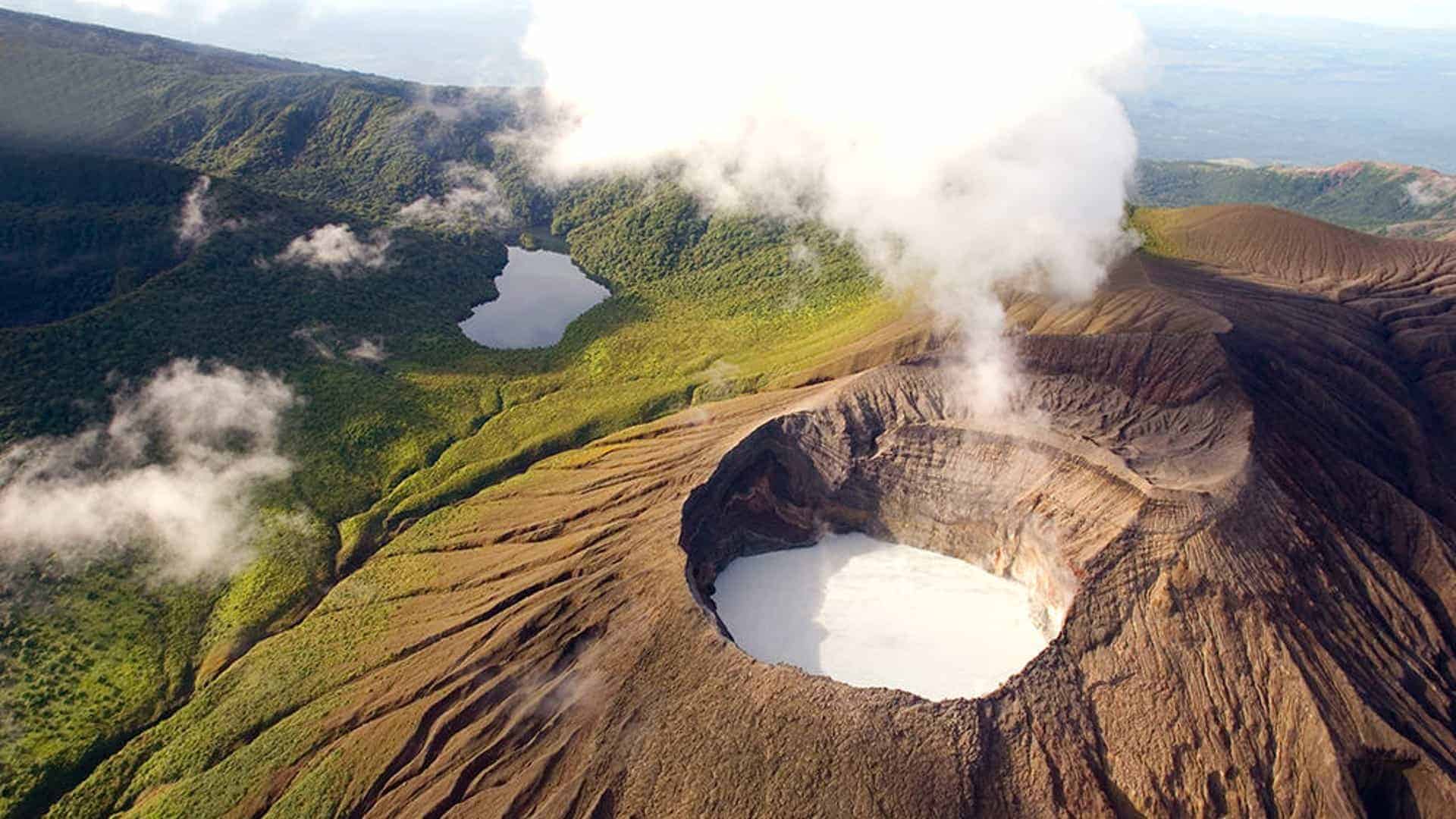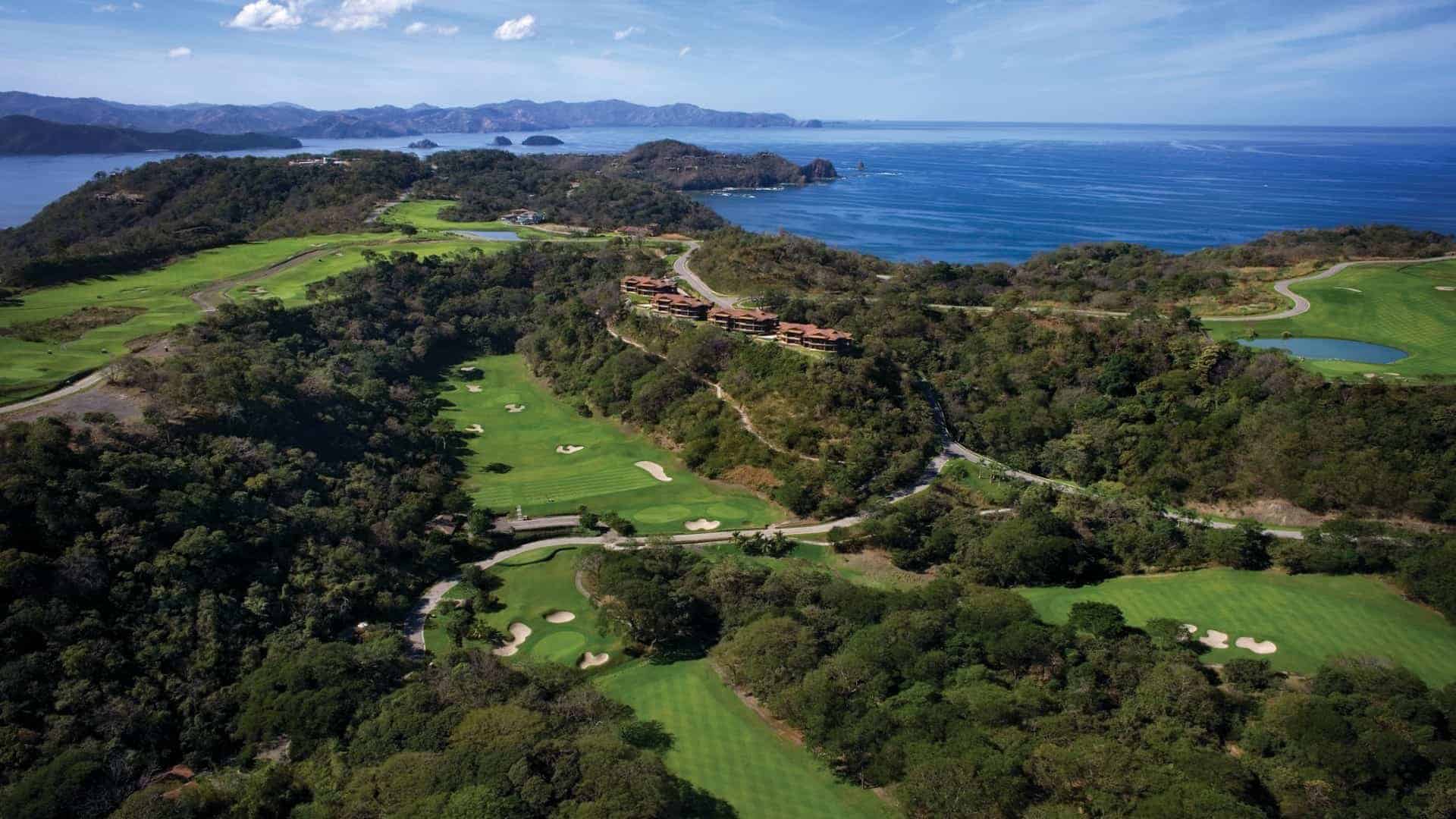Table of contents
Do you want to see baby sea turtles hatching on the beaches of Costa Rica? Your best bet may be to contact one of the many grassroots Costa Rica turtle conservation groups.
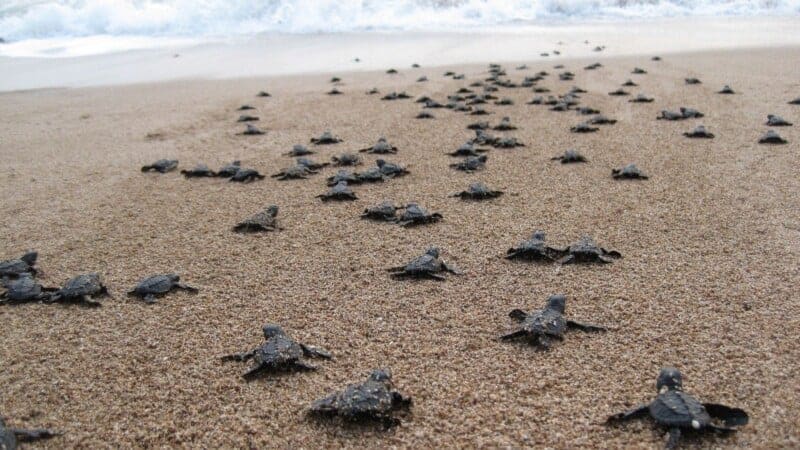
Many organizations are trying to save the sea turtles that lay their eggs on the beaches of Costa Rica. There are at least two of these groups located near Tamarindo that need your help.
One is a project coordinated by a Costa Rican group called Verdiazul. Its mission is to save sea turtles and repopulate them along the Pacific coastline of Guanacaste.
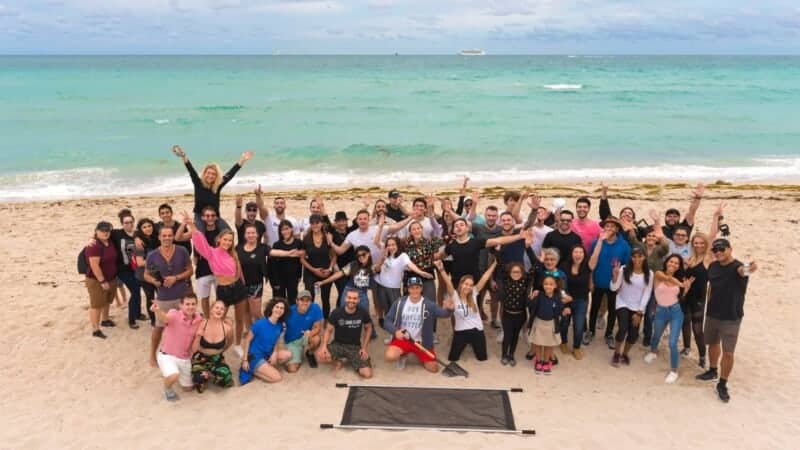
The other is called Sea Turtles Forever, a nonprofit group that turns poachers into protectors. More on these groups later, but first, here is some information about sea turtles in Costa Rica.
Where can you see sea turtles in Costa Rica?
Costa Rica is home to dozens of important nesting beaches for four species of sea turtles: leatherbacks, green, olive ridley and hawksbill.
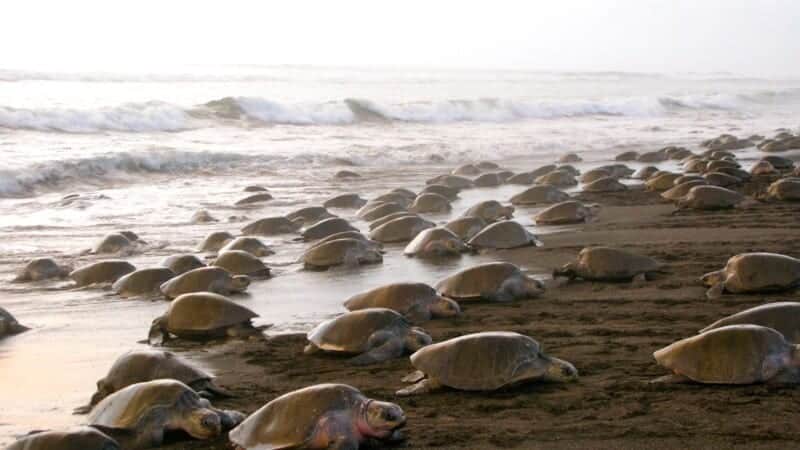
These sea turtles lay their eggs up and down Costa Rica’s Pacific and Caribbean coasts. However, they tend to concentrate in the following areas:
- Las Baulas Marine National Park, near Playa Grande.
- Santa Rosa National Park, with two main nesting beaches.
- Ostional Wildlife Refuge, near Nosara in the Nicoya Peninsula.
- Tortuguero, on the Caribbean coast.
- The Osa Peninsula, a protected area in southwestern Costa Rica.
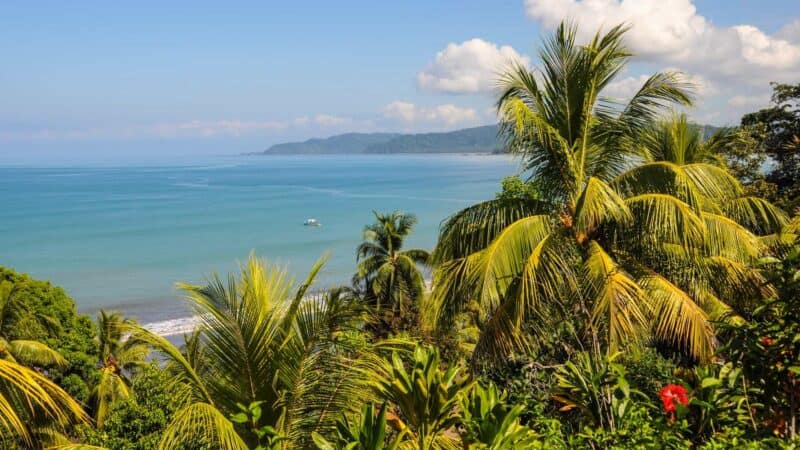
Why are turtles threatened in Costa Rica?
In Costa Rican culture, there’s an old culinary tradition to eat sea turtle eggs taken from nests on the beach – though today this is illegal except in rare cases. Sea turtle eggs have been a dietary staple of coastal communities for generations.
Today, though, the people of Costa Rica have access to a variety of food sources, so eating turtle eggs is unnecessary. And in today’s age of environmental protectionism, eating turtle eggs is a contentious issue.
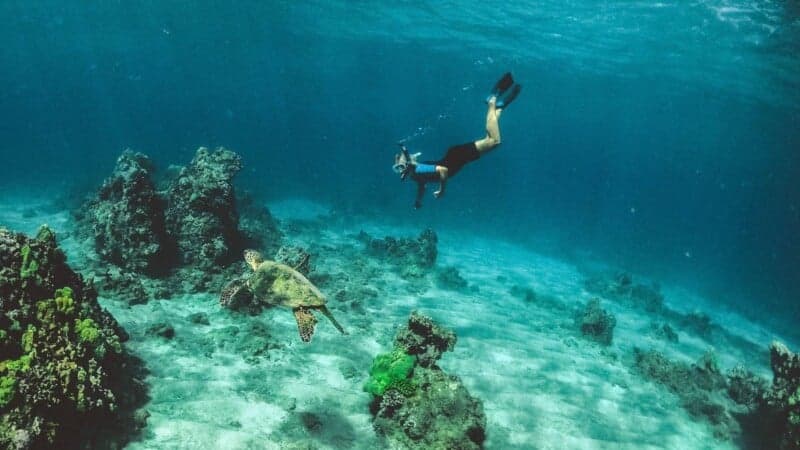
It may be surprising to many tourists, but the Costa Rica government allows some restaurants to sell turtle eggs, but only if they have a special license. A few restaurants and sodas in Costa Rica still advertise sea turtle eggs on the menu, even though most sea turtle populations are threatened.
Additionally, turtle eggs are sold on the black market as an aphrodisiac, though there is no evidence to support this idea.
What conservation efforts are helping sea turtles?
In response to poaching and government inaction, Costa Rica turtle volunteer groups are taking matters into their own hands. Here are two groups that are doing important work in Guanacaste.
Verdiazul
When it began, this group’s focus was on the largest of all sea turtles, the threatened leatherback species. The giants come ashore on the beach at Playa Grande and Las Baulas Marine National Park. However, today the group tries to save all sea turtles, including olive ridley and black turtles.
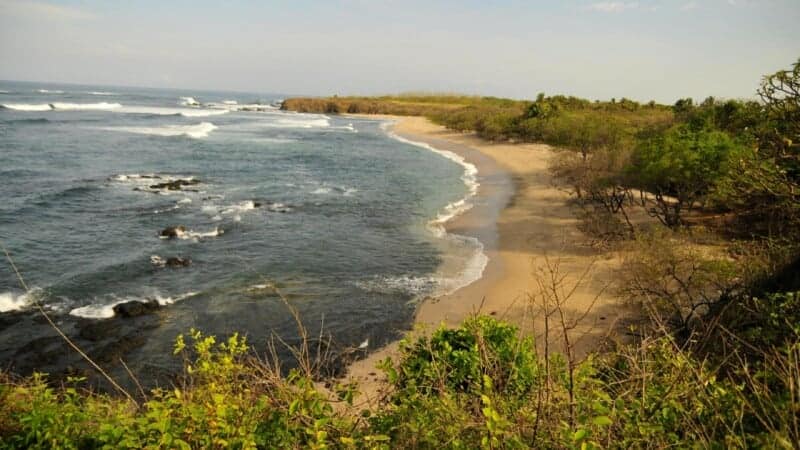
The group has a station in Playa Junquillal (HOONK-ee-YAHL), which is a small village located about a 35-minute drive south of Tamarindo and Playa Langosta. On the beach, the group has constructed a large cage. Inside the cage, it looks like a garden, with rows of signs sticking out of the sand.
The signs identify rows of individual nests that are full of sea turtle eggs. Written on the signs are their expected hatch dates.
Subscribe to our newsletter
to stay up to date
Verdiazul staff and volunteers watch for adult female turtles that come ashore, usually at dawn or dusk. The slow-moving turtles dig large holes in the beach, into which they deposit dozens of eggs before covering them back up with their flippers.
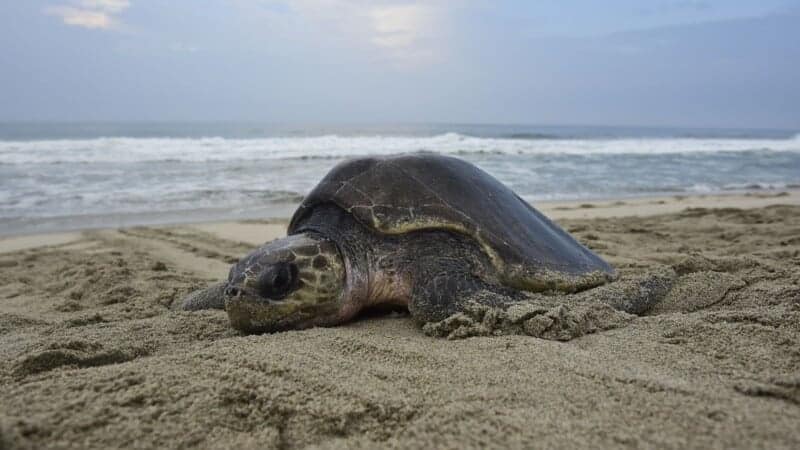
When they see this happening, Verdiazul members jump into action. Before poachers and other predators can get to them, they carefully take the eggs from the hole and transport them to the safety of the cage in Playa Junquillal. It’s this method that has saved thousands of sea turtle eggs from harm, allowing them to safely incubate.
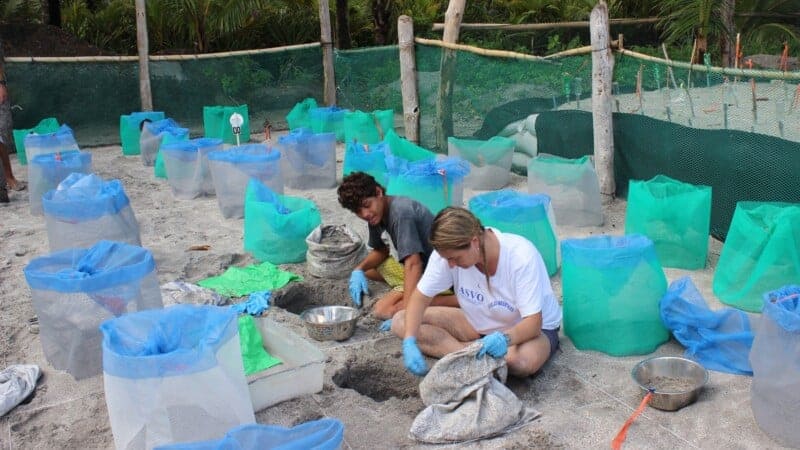
Stray dogs, seabirds, raccoons and fly larvae are all potential dangers to sea turtle eggs. The biggest threat, however, is human beings who poach the eggs to sell on the black market.
How to see baby sea turtles hatch in Costa Rica
When the eggs are ready to hatch, Verdiazul sends messages to nearby hotels and tour operators, notifying them that the babies are ready to break through their leathery eggs and begin their scramble to the ocean.
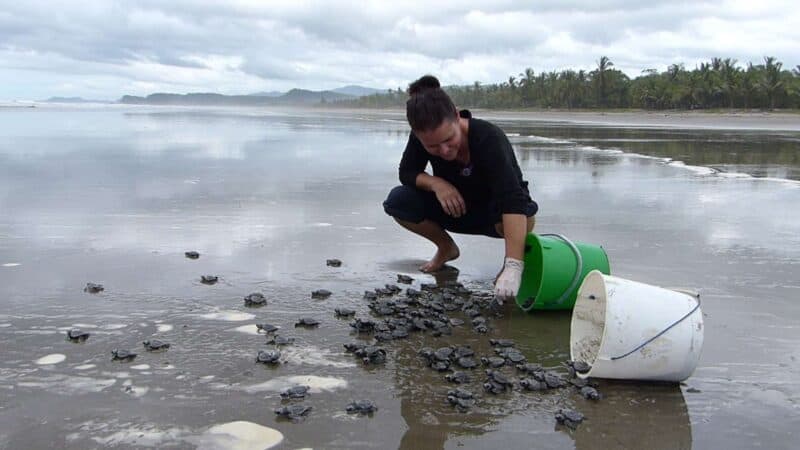
There’s little time to spare. Tourists have no more than an hour to make their way to Playa Junquillal to watch the spectacle. There’s no guarantee you’ll see anything, though, as this is an act of nature. In the end, it’s the baby sea turtles that decide when they’ll ultimately hatch. If you do get lucky and see the baby sea turtles on the beach, it’ll be a Costa Rica vacation memory that you’ll never forget!
Sea Turtles Forever
Verdiazul is just one of many groups working to conserve and protect sea turtle populations in Costa Rica. Sea Turtles Forever (STF) is another. STF says it saves between 5,000 and 12,000 turtle eggs every year.
The group has been working on the beaches of Guanacaste for more than 20 years. It has seen nesting numbers dwindle to a fraction of what they used to be. Near the community of Playa Negra, nesting has gone from approximately 300 per night to around one or two, raising the alarm that every effort to save and repopulate sea turtles is critical right now.
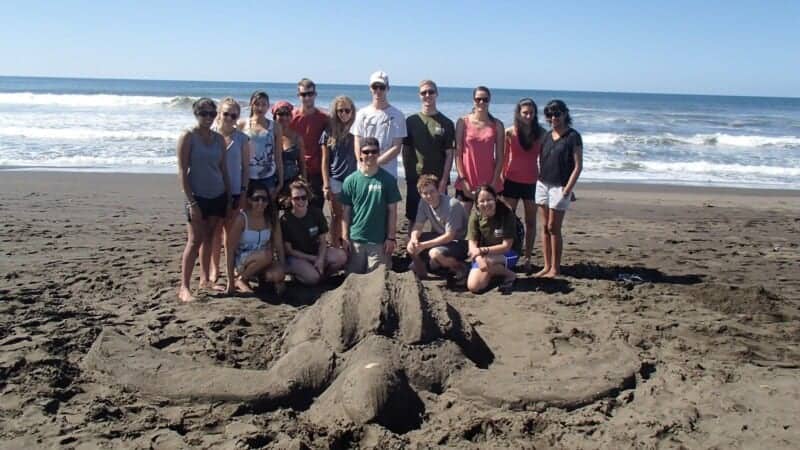
STF offers residents and sometimes even former poachers a wage higher than what they would make selling sea turtle eggs. These recruits scan the beaches at night looking for fresh nests. Instead of moving the nests to a cage, STF members move the nests to other areas of the beach and erase any tell-tale signs that an adult female was ever there, allowing the eggs to hatch in a natural environment.
STF also tags and monitors adult females to record their activity and migrations.
How do I volunteer to help sea turtles in Costa Rica?
Verdiazul and Sea Turtles Forever are always looking for help in their mission to protect and repopulate sea turtle species in Costa Rica. Here’s how you can help:
#1
Volunteer
Verdiazul offers a volunteer program that offers lodging and meals in exchange for work. It’s a great opportunity to see Costa Rica and to help local wildlife. Volunteers are required to patrol the beaches at night, look for fresh sea turtle nests, plant native trees and clean the beaches.
#2
Donate
Verdiazul and STF need money to survive. Donations fund the full-time staff and help buy equipment. The goal of Verdiazul is to eventually become self-sustainable, but right now they need donations to keep working. The staff members live in Junquillal, where they coordinate the volunteer and conservation efforts.

Sea Turtles Forever has a unique program. For a $100 donation, you can choose the name of one of its tagged turtles.
#3
Visit and educate yourself
The team at Verdiazul loves it when travelers from all over the world come and visit their station in Playa Junquillal and witness the turtle hatchings. The more people who are educated about Costa Rica sea turtle conservation, the easier it will be to restore threatened sea turtle populations.
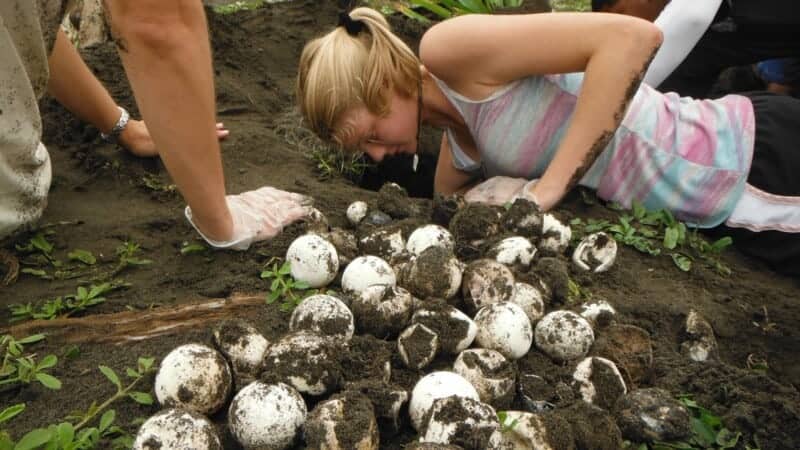
During the high season, Sea Turtles Forever conducts sea turtle nesting tours. Times depend on the tides and the phases of the moon.
Special Places of Costa Rica also offers amazing sea turtle tours from Playa Flamingo that include guides and park fees.
Costa Rica sea turtle FAQs
Here are some other frequently asked questions about Costa Rica turtle conservation:
Are sea turtles protected in Costa Rica?
In Costa Rica, like most countries in the world, almost all species of sea turtles are considered threatened or endangered. Sea turtles are slaughtered for their shells, skin, meat and eggs. They are also often caught and killed in fishing nets.
Climate change is also affecting sea turtle habitats. Increasing ocean temperatures are changing their migratory habits and rising sea levels are flooding the beaches where they lay their eggs.
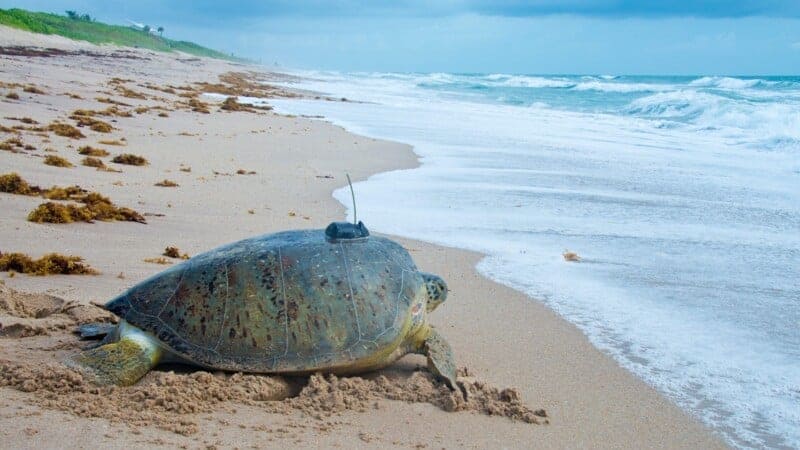
The Costa Rica government does allow residents to harvest turtle eggs under certain circumstances. However, those caught illegally killing, hunting or capturing sea turtles or selling turtle products face prison time.
Can you see turtles in Costa Rica in December?
A phenomenon known as an “arribada,” an arrival, takes place on the beach at the Ostional Wildlife Refuge in Costa Rica. Thousands of female olive ridley sea turtles simultaneously come ashore and lay millions of eggs.
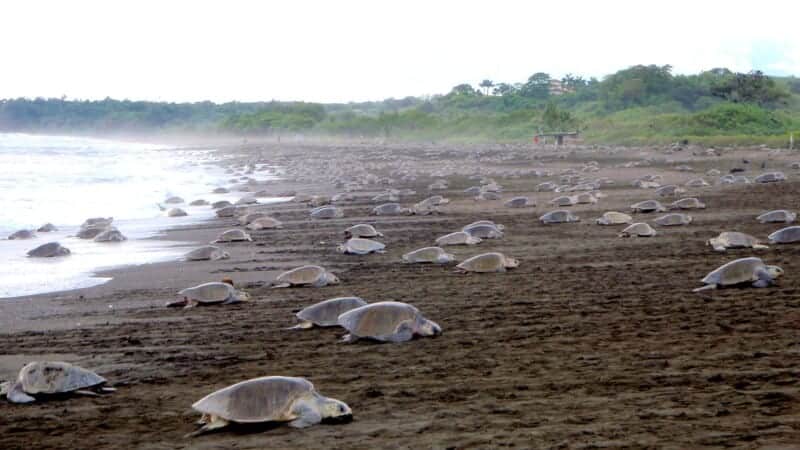
It’s an incredible sight, and scientists and wildlife experts still don’t know exactly why it happens. This takes place about once a month, with the peak season between August and November. It happens in
What month do turtles hatch in Costa Rica?
Sea turtles hatch all year long, and it differs by species, but you’ll have a better chance of seeing it happen between March and November.
Can you swim with turtles in Costa Rica?
Sea turtles are docile and passive creatures and aren’t scared of human beings. Lucky scuba divers and snorkelers off the coast of Costa Rica may get to swim with sea turtles in their natural habitat if they treat the sea creatures with respect and watch them from a distance.
Subscribe to our newsletter
to stay up to date


